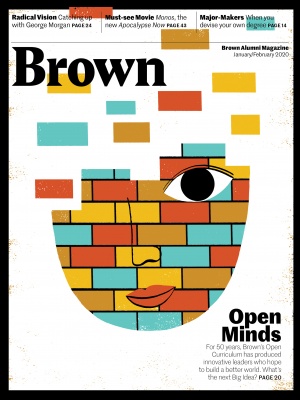Every fall, the media highlights the financial returns achieved by university and college endowments. If you follow this news, you know that the University had exceptional investment results for Fiscal Year 2019. With its portfolio benefitting from a strong performance across asset classes, Brown’s endowment and other managed assets generated $469 million in investment gains, which represents a 12.4 percent return. This not only far exceeds our aggregate benchmark among colleges and universities—which was 5.3 percent—but places Brown at the very top of college and university endowment returns in the country.
Combined with a record-breaking year for fundraising, this propelled the funds managed by Brown’s Investment Office to an all-time high of $4.2 billion. In the last year alone, the endowment provided $165 million to the University and supported about 14 percent of Brown’s annual operating budget.
The strong investment performance delivered by the talented professionals in Brown’s Investment Office deserves our recognition. It is also important to recognize the long-term impact of the endowment on Brown’s goals to reach new levels of academic excellence. While the media focuses attention on endowment returns every year, they typically ignore the importance of endowments to their institutions.
The endowment reflects the generous and consistent support of benefactors dating back to an original gift of $4,500 in 1769—an amount that is roughly equal to $150,000 in current dollars. Today’s endowment is an amalgamation of literally thousands of individual funds established over the last 250 years by alumni, parents, students, foundations, and friends of Brown.
Endowed funds support a wide range of strategic priorities at Brown, including financial aid, professorships, academic programs, teaching, research, athletics, and other student-focused programs. However, the single largest use of the endowment on an annual basis is for financial aid. Bringing bright and extraordinary students to campus, regardless of their ability to pay, is essential to sustain the University’s excellence and the distinctive undergraduate education for which Brown is known.
“At 12.4 %, Brown is at the very
top of university endowment returns in
the country.”
In 2003, endowed scholarship funds made it possible for Brown to become a “need blind” university that accepts first-year domestic applicants without regard to their family’s financial circumstances. And the University launched the Brown Promise initiative in 2017, which replaced all loans in students’ financial aid packages with grants. The early impact of this initiative, made possible through current-use and endowed support, is that our newest alumni are empowered to make choices about careers and graduate education that are not influenced by the burden of debt.
The endowment also provides essential support for our outstanding faculty. About a fifth of the endowment was given to support endowed professorships, which not only support faculty salaries but honor and recognize Brown’s exceptionally talented professors. Since the launch of the BrownTogether campaign five years ago, donors have created 75 new endowed professorships, 36 of which have already been awarded.
Some endowed professorships have been used to honor long-serving Brown faculty members like Joe Hogan, a biostatistician who arrived at Brown in 1995 and in 2017 was named the Carole and Lawrence Sirovich Professor of Public Health. Joe is known for his work using statistical methods to understand and improve the treatment of HIV in sub-Saharan Africa. Other chairs have been used to recruit exceptional new faculty like Kate O’Connor-Giles, a neuroscientist who came to Brown in 2018 as the Provost’s Associate Professor of Brain Science. Kate’s research is on communication in neural circuits, a subject that is key to understanding neurological disorders such as autism and neurodegeneration.
I encourage you to read Brown’s 2019 Financial Report, which provides additional information on the University’s financial performance and celebrates the accomplishments of the University during the first five years of its 10-year strategic plan, Building on Distinction. As always, I want to thank the alumni, parents, and friends who have made these accomplishments possible through their consistent support—as volunteers, alumni interviewers, employers of Brown graduates, and as donors to the Brown Annual Fund, capital projects, and the endowment.





